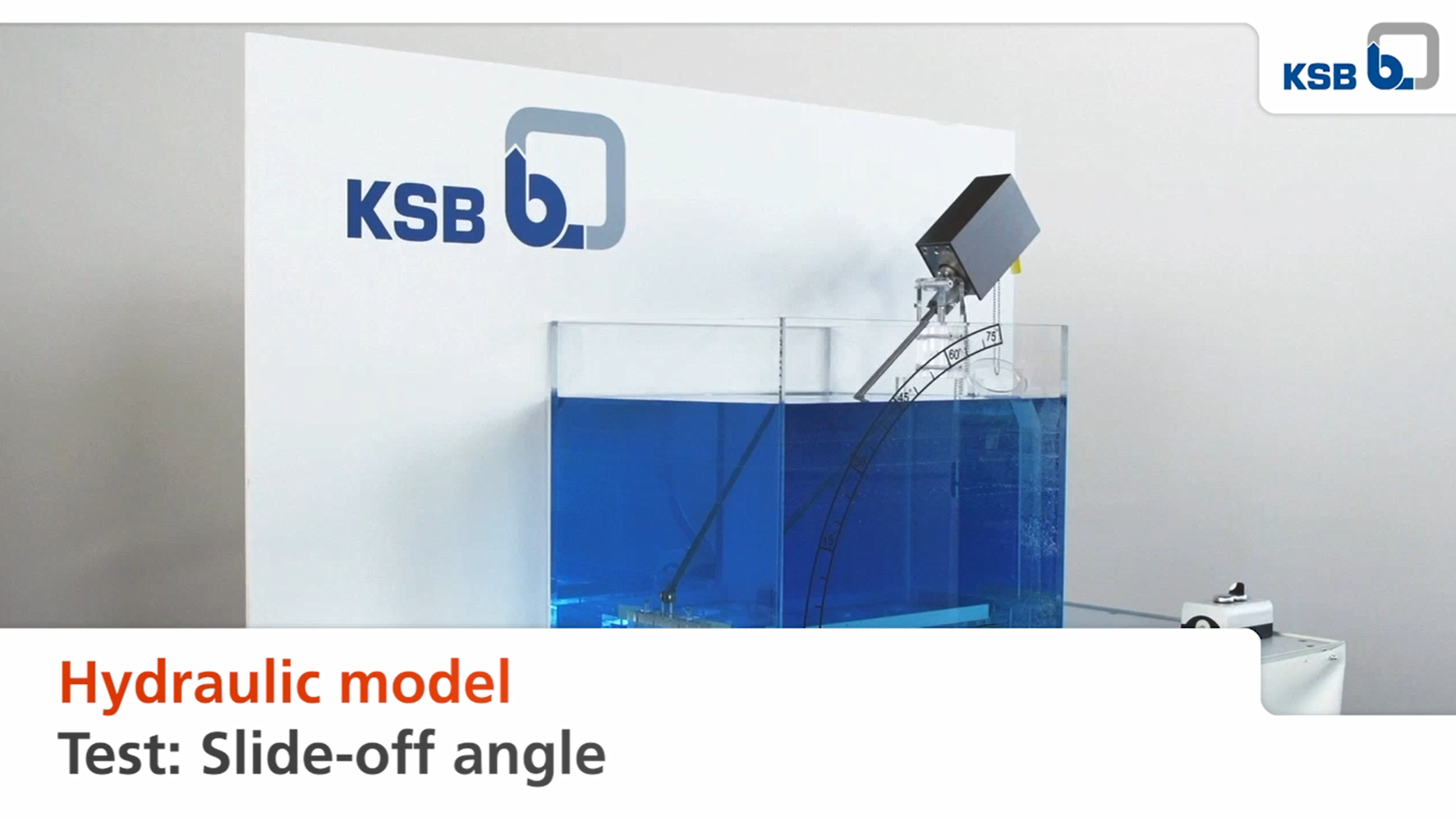
Hydraulic model testing: The right benching angle for a waste water treatment plant.
Solids deposits can impair pump operation significantly.
Behaviour of different solids with different floor slope angles and different surface qualities in the intake area of a pumping station.
What benching angle is required to prevent deposits?

Conclusion of the benching angle model test
Model testing by KSB: Thinking small, building big!
Suitable products
Amarex KRT
Horizontal or vertical single-stage submersible motor pump in close-coupled design, with various next-generation impeller types, for wet or dry installation, stationary or transportable version, with energy-saving motor and models for use in potentially explosive atmospheres.
Sewatec
Volute casing pump for horizontal or vertical installation, with various next-generation impeller types, discharge flange to DIN and ANSI standards. Explosion-proof version available.
Amaline
Wet-installed horizontal propeller pump with submersible motor, equipped with direct drive or spur gear, ECB propeller with rigid, fibre-repellent blades, bolt-free connection to the discharge pipe. Explosion-proof version available.